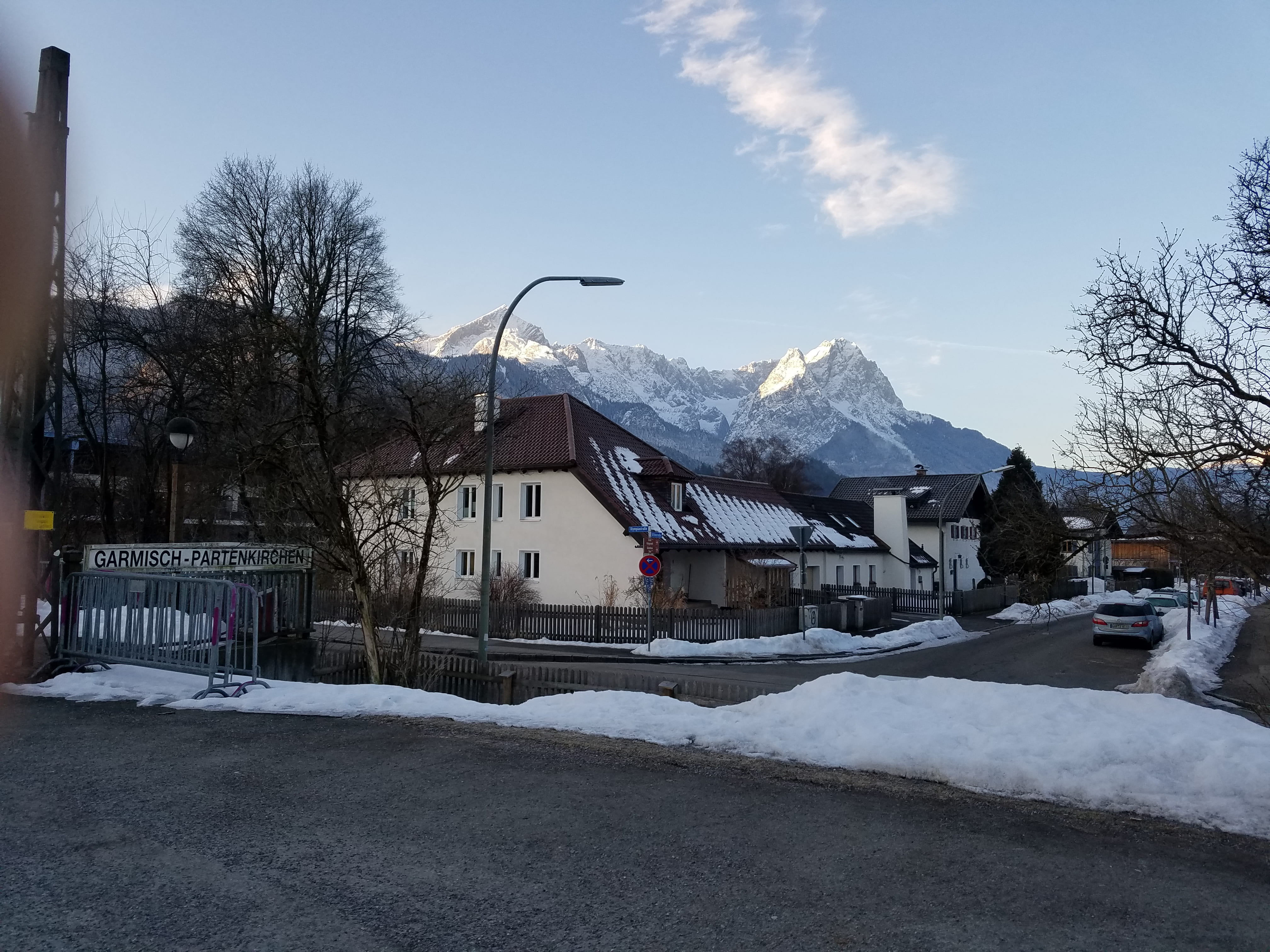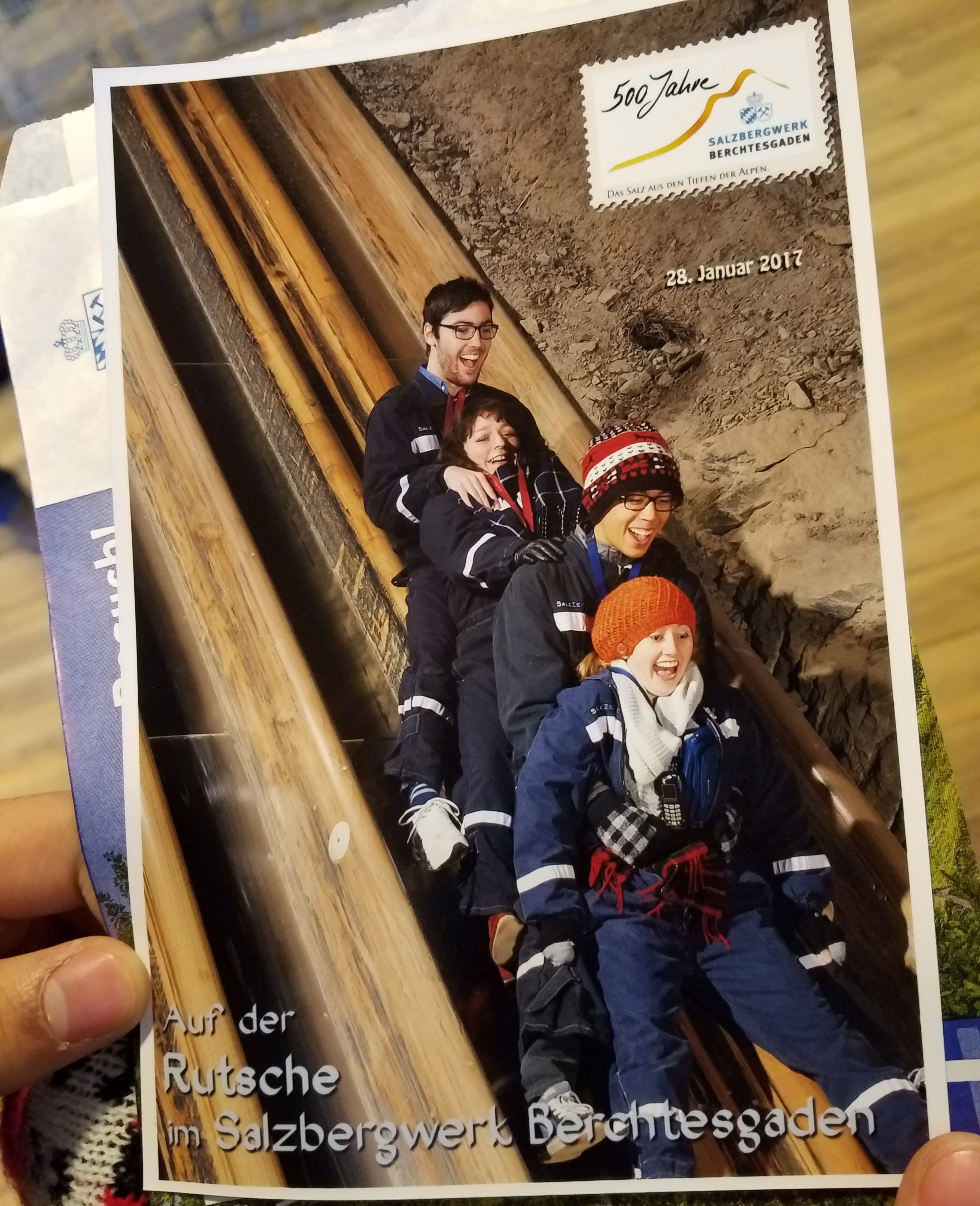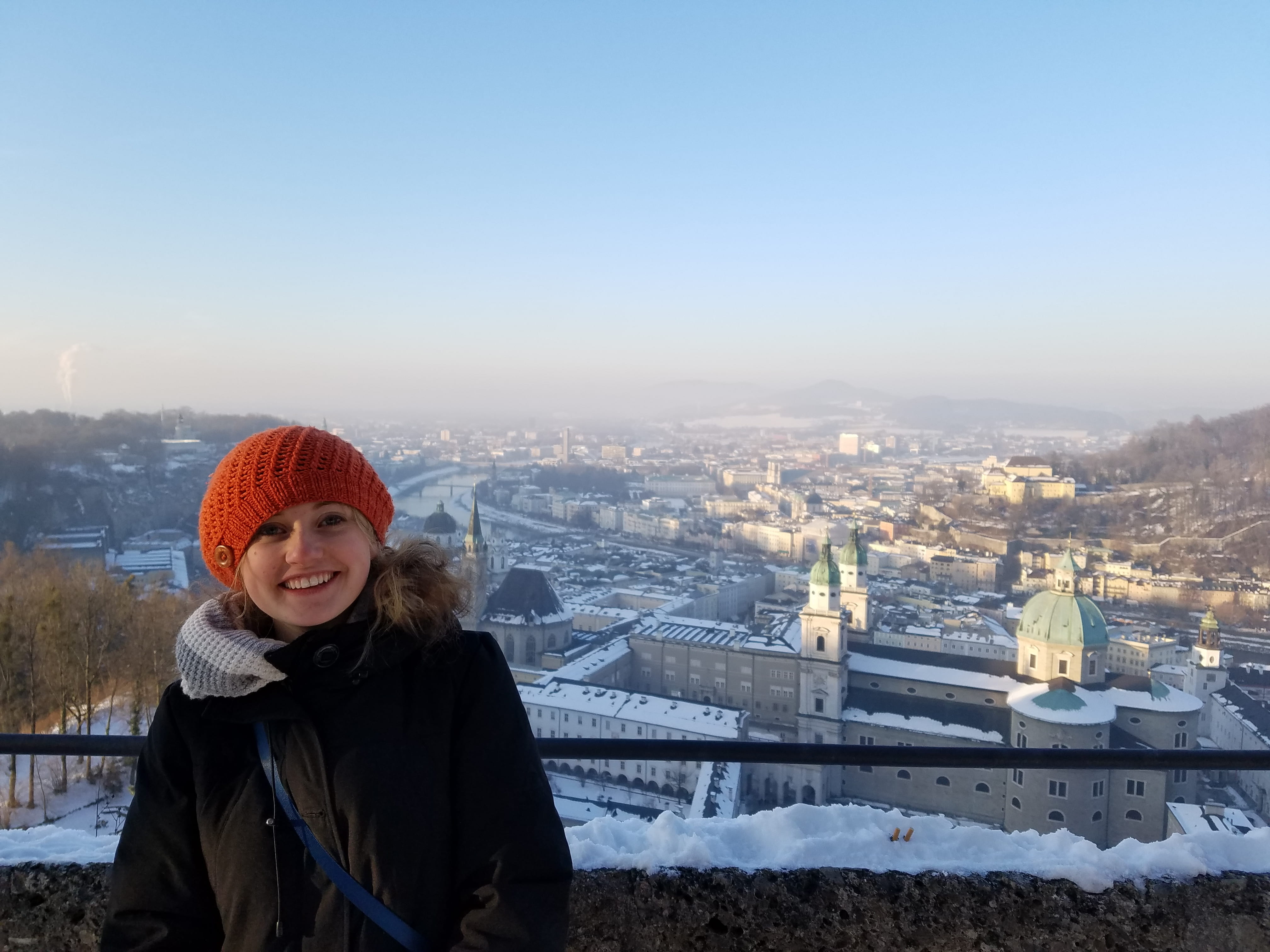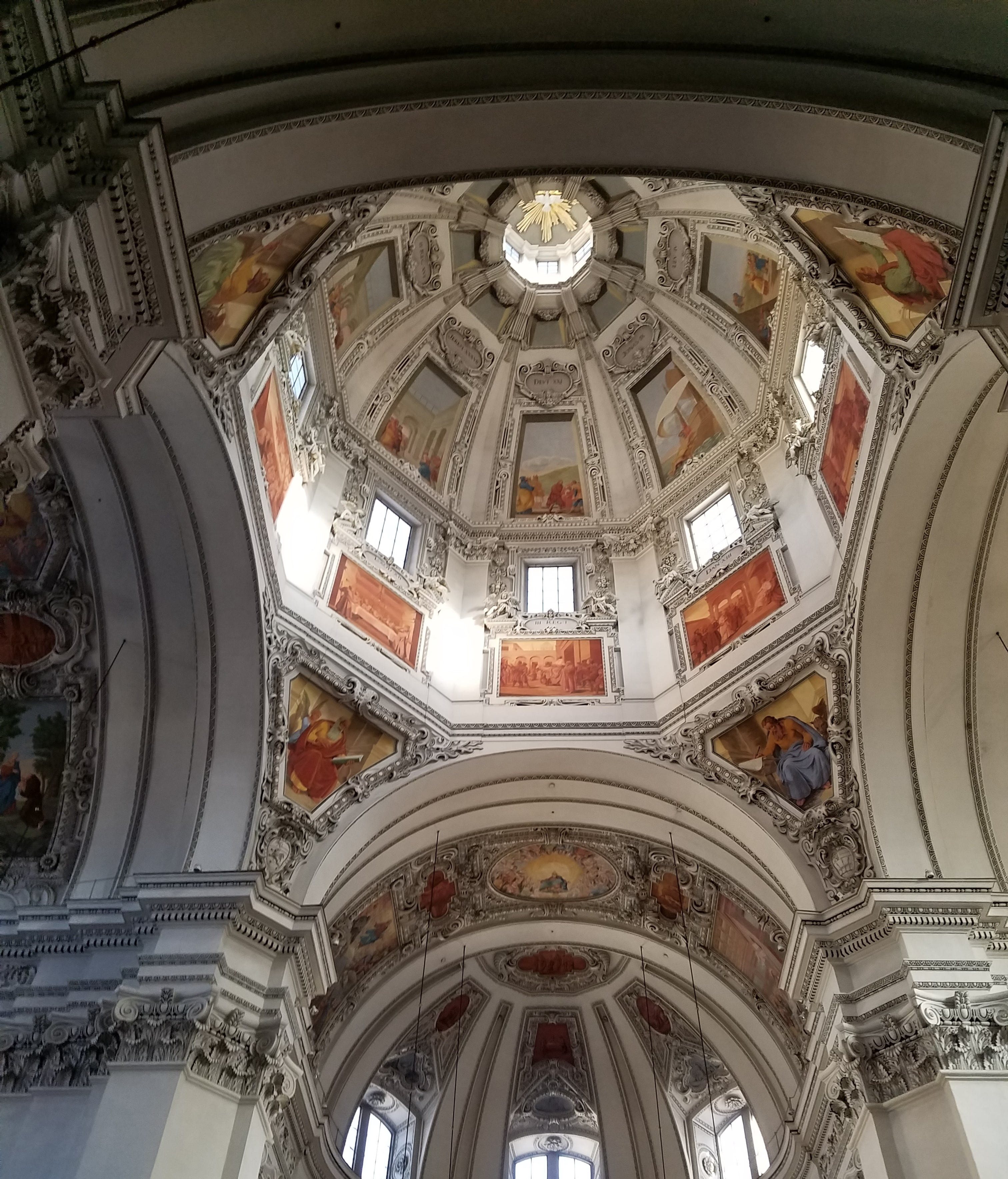Written by: Ashlyn Willis
One of the most rewarding parts of studying abroad through Georgia Tech Europe has definitely been how the weekends offer a constantly changing backdrop for adventure, learning, exploration, and more. Each place has its own charm and tempo. I have experienced countless breathtaking moments from cathedrals in Bratislava to grand parliament buildings in Brussels. But two in particular in my experiences so far have made a definite impact in my memory. Vienna, Austria, and Florence, Italy struck me for the thing that felt as if it was ingrained in their very stones–art. In these two cities, art does not just exist inside museums; it flows throughout the structure and culture of the palace itself. On every wall, around every corner, it is embedded in the very way life seemed to be designed there.
Both cities felt like walking through a living museum. In Vienna, I was not just taken aback by the quantity of beautiful architecture, but how detailed it all was on seemingly every other building. St. Stephen’s Cathedral and the City Hall, for example, are absolutely awe-inspiring in both size and detail. They are definitely Gothic masterpieces, with towering spires reaching straight up to the sky. Even beyond its landmarks, Vienna’s everyday cityscape felt like a celebration of some sort of grand ornamentation. Whether it was the embellishments carved into public buildings, golden adornment and filigree in shopfronts, or the way the street gates curved gracefully, everything had a certain elegance that felt like the city was designed by artists, for artists. It made perfect sense that this was the home of Gustav Klimt, a workplace of Mozart, the subject for Billy Joel’s classic song, and so many more.


Images of Vienna City Hall and St. Stephen’s Cathedral
With Florence, the city felt like an art piece itself. Walking through its streets could have very well been like travelling back in time to a visual scene of the Renaissance. The Duomo looks like a bold painting come to life, with its intricate green and pink marble pattern and a dome too impressive to be real. I was constantly swiveling my head around just to take in the buildings and their terracotta-looking rooftops all around me, all decorated with some kind of flourish, whether subtle or bold, be it a statue, a fresco, or some ornate doorway. Florence definitely does not let people forget it was once the heart of an artistic revolution. I think what I loved most was how naturally the art felt embedded into the city. It wasn’t just limited to its impressive galleries like the Uffizi; rather, walking out of this museum felt like I was just stepping into a larger exhibition. It was the way the simple alleyways opened up into the sunlit piazzas, where artists were in markets selling drawn sketches, and the way at sunset golden rays complemented the sandy tones of the city’s skyline from the Piazzale Michelangelo.



Images of the Uffizi Gallery, a view of the Florence rooftops, and the sunset at Piazzale Michelangelo
What struck me in both cities was that art was not treated as something separated from regular life to be only admired in the isolated pockets of museums and showcase attractions. Rather, it seemed to be a part of life, with people walking past sculptures and ornate buildings all around. I realized in reflecting on my time in these two cities, as they have stuck with me so heavily, how much I love that blend of old and new, of beauty and function, of history and casual life. My classes this summer have definitely helped me to appreciate these layers with connections in what I have been learning about and what I have experienced in each city. In many ways, Vienna and Florence have helped me deeply appreciate the importance of the arts and how important they are to history as a whole. However, this is not limited to just these two cities, as everywhere I have been so far has had its own form of incomparable beauty. There is so much to appreciate in how each city, each town, each place, something I am greatly thankful to be able to experience in such a way.








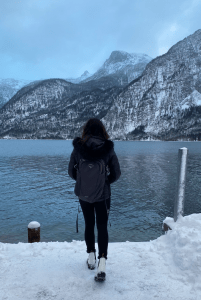 It was the sound of the snow crunching under my boots, the whistle of the wind, and the rustle of the everlasting pines that engulfed me into a magical world. It seemed as if every small movement brought a tingle to my ears as I tried to search for the source of the sound. Here and there, the rumble of a car engine and the scrape of a shovel pierced the still air; however, it still seemed to be an art within itself. It was as if nature and humanity met at a crossroad, blending into a circle of life. The sounds, so mundane yet so foreign, seemed to hold such deeper meaning in a place so different from home.
It was the sound of the snow crunching under my boots, the whistle of the wind, and the rustle of the everlasting pines that engulfed me into a magical world. It seemed as if every small movement brought a tingle to my ears as I tried to search for the source of the sound. Here and there, the rumble of a car engine and the scrape of a shovel pierced the still air; however, it still seemed to be an art within itself. It was as if nature and humanity met at a crossroad, blending into a circle of life. The sounds, so mundane yet so foreign, seemed to hold such deeper meaning in a place so different from home.  It was the fresh smell of timber that wafted through the air as we continued to trek into the forest. Logs upon logs of wood lay in a pile under a light blanket of snow, as if it were to contain the comforting aroma. Upon first glance, it was just like any ordinary sight; however, as I stepped closer, I could smell an earthy sweetness, a deep scent of cedar and pine that engulfed the pile of wood. It instantly brought me a vision of a log cabin, warmed by a crackling fireplace, hidden away from others for miles. It reminded me of Christmas, but this time in a winter wonderland.
It was the fresh smell of timber that wafted through the air as we continued to trek into the forest. Logs upon logs of wood lay in a pile under a light blanket of snow, as if it were to contain the comforting aroma. Upon first glance, it was just like any ordinary sight; however, as I stepped closer, I could smell an earthy sweetness, a deep scent of cedar and pine that engulfed the pile of wood. It instantly brought me a vision of a log cabin, warmed by a crackling fireplace, hidden away from others for miles. It reminded me of Christmas, but this time in a winter wonderland. 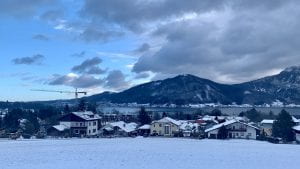
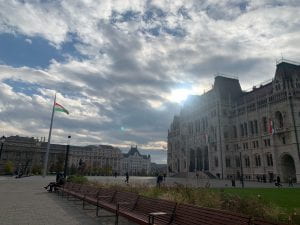
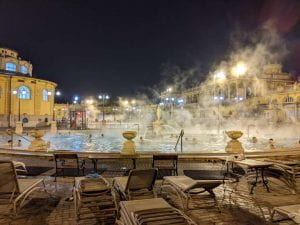
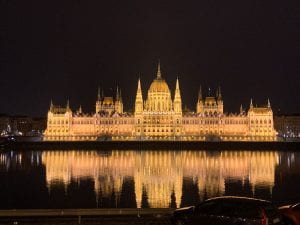
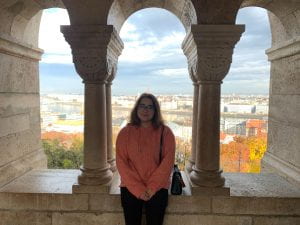
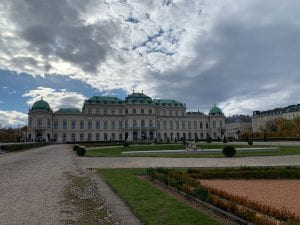
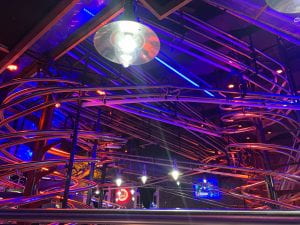
 Munich HTS trip, I thought I was going to take a train to go to Rajka, Hungary, walk about two and a half miles to stand on where Slovakia, Austria, and Hungary came together, and then head back to Vienna and spend the day there and then take an overnight train back to Metz. Well, a couple of those stayed true—I’m writing this on the overnight train back to Metz. However, after making a couple of questionable moves, I ended up not going to Rajka.
Munich HTS trip, I thought I was going to take a train to go to Rajka, Hungary, walk about two and a half miles to stand on where Slovakia, Austria, and Hungary came together, and then head back to Vienna and spend the day there and then take an overnight train back to Metz. Well, a couple of those stayed true—I’m writing this on the overnight train back to Metz. However, after making a couple of questionable moves, I ended up not going to Rajka. Munich for the weekend, and then headed to the station for my first solo trip. My trains took me through Salzburg, Vienna, and eventually to Parndorf, Austria, where I spent the wee hours (from 1:30 A.M. until 5:30 A.M.) of the morning. I was the only person at this tiny train station in the middle of nowhere. Needless to say, I hated that and was creeped out the entire time I was awake. I managed to get a couple of hours of sleep (putting me at 11 hours of sleep in three nights), but it was here that I decided to skip out on Hungary and just head to Bratislava, Slovakia, and then to Vienna. This decision let me get out of Parndorf a few minutes earlier and into Vienna four hours earlier. After spending twenty minutes in the Bratislava train station, I have now been to fourteen countries in my life.
Munich for the weekend, and then headed to the station for my first solo trip. My trains took me through Salzburg, Vienna, and eventually to Parndorf, Austria, where I spent the wee hours (from 1:30 A.M. until 5:30 A.M.) of the morning. I was the only person at this tiny train station in the middle of nowhere. Needless to say, I hated that and was creeped out the entire time I was awake. I managed to get a couple of hours of sleep (putting me at 11 hours of sleep in three nights), but it was here that I decided to skip out on Hungary and just head to Bratislava, Slovakia, and then to Vienna. This decision let me get out of Parndorf a few minutes earlier and into Vienna four hours earlier. After spending twenty minutes in the Bratislava train station, I have now been to fourteen countries in my life.

 cathedral, but I regret not going in. I ended up just eating some ice cream and drinking a coffee outside, as I was exhausted. From here, I made the hour trek to the train station, grabbed dinner, and hopped on this train. I ended up walking over twenty miles throughout Vienna, so I’d say there isn’t too much I didn’t see, except for Eliud Kipchoge breaking the marathon record in Vienna on the same day, but I felt as if I had also completed a marathon. Hopefully, I’ll be able to get some sleep on the rest of this train, as I need to catch up.
cathedral, but I regret not going in. I ended up just eating some ice cream and drinking a coffee outside, as I was exhausted. From here, I made the hour trek to the train station, grabbed dinner, and hopped on this train. I ended up walking over twenty miles throughout Vienna, so I’d say there isn’t too much I didn’t see, except for Eliud Kipchoge breaking the marathon record in Vienna on the same day, but I felt as if I had also completed a marathon. Hopefully, I’ll be able to get some sleep on the rest of this train, as I need to catch up.